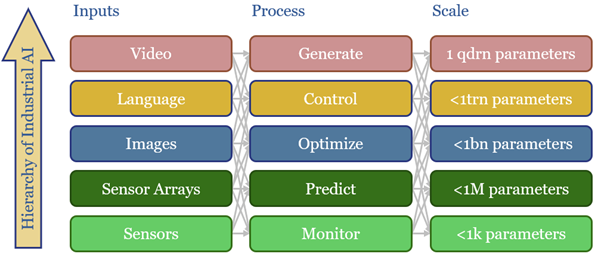Increasingly efficient AI should unlock more widespread and sophisticated uses of AI. This is shown by reviewing 40,000 patents from 200 industrial companies. This 15-page report links industrial AI and the Jevons effect. We summarize notable companies, patent filings, and update our 2030 forecasts for AI energy.
In our 2025 outlook note from January 2nd, we wrote that “when we revisit our AI energy demand numbers in 1Q25, we will be upgrading estimates for total AI compute by multiple orders of magnitude; however we will also be upgrading our estimates for the energy efficiency of compute by an order of magnitude as well”.
On the efficiency side, this statement was motivated by reviewing Groq’s inference LPUs that are 80-90% more energy efficient than GPUs, how optical computing could unlock 100x gains or more, and how 2023’s best computers still use 200M times more energy than the Landauer limit’s thermodynamic minimum. And of course, more recently, claims from DeepSeek (see page 15).
But on the demand side, this report has explored a corpus of 40,000 patents discussing AI and machine learning, filed in 2022-24, by 200 industrial companies that have featured most prevalently in our research. 65% of these companies have started developing AI solutions in-house. And 15% have developed hundreds/thousands of such patents. Details are on pages 2-4.
Vast latent demand for AI is revealed by reviewing these patents, in contexts that frankly are on very few peoples’ radars. Or in other words, there are tens of thousands of “million dollar problems” most people are not aware of, per page 5.
A hierarchy of complexity can also be seen in these industrial AI patents: starting with simple monitoring models based on a few sensors, and graduating towards full-blown generative AI using video and language inputs (illustrated in the image above). Most AI use today is simple, at the bottom of the hierarchy. But many interesting examples are clearly ascending the hierarchy.
These two points – about vast latent demand, and a hierarchy of complexity – are illustrated with some of our favorite examples, patent by patent, company by company, on pages 6-10. It is interesting to note ‘who is doing what’.
Industrial AI and the Jevons Effect? There is strong evidence, based on these examples, that increasingly efficient AI will simply unlock more demand for AI, across the industrial landscape, as discussed on pages 11-12. Our forecasts for AI energy demand are revised to include this Jevonsian linkage on pages 13-15.
